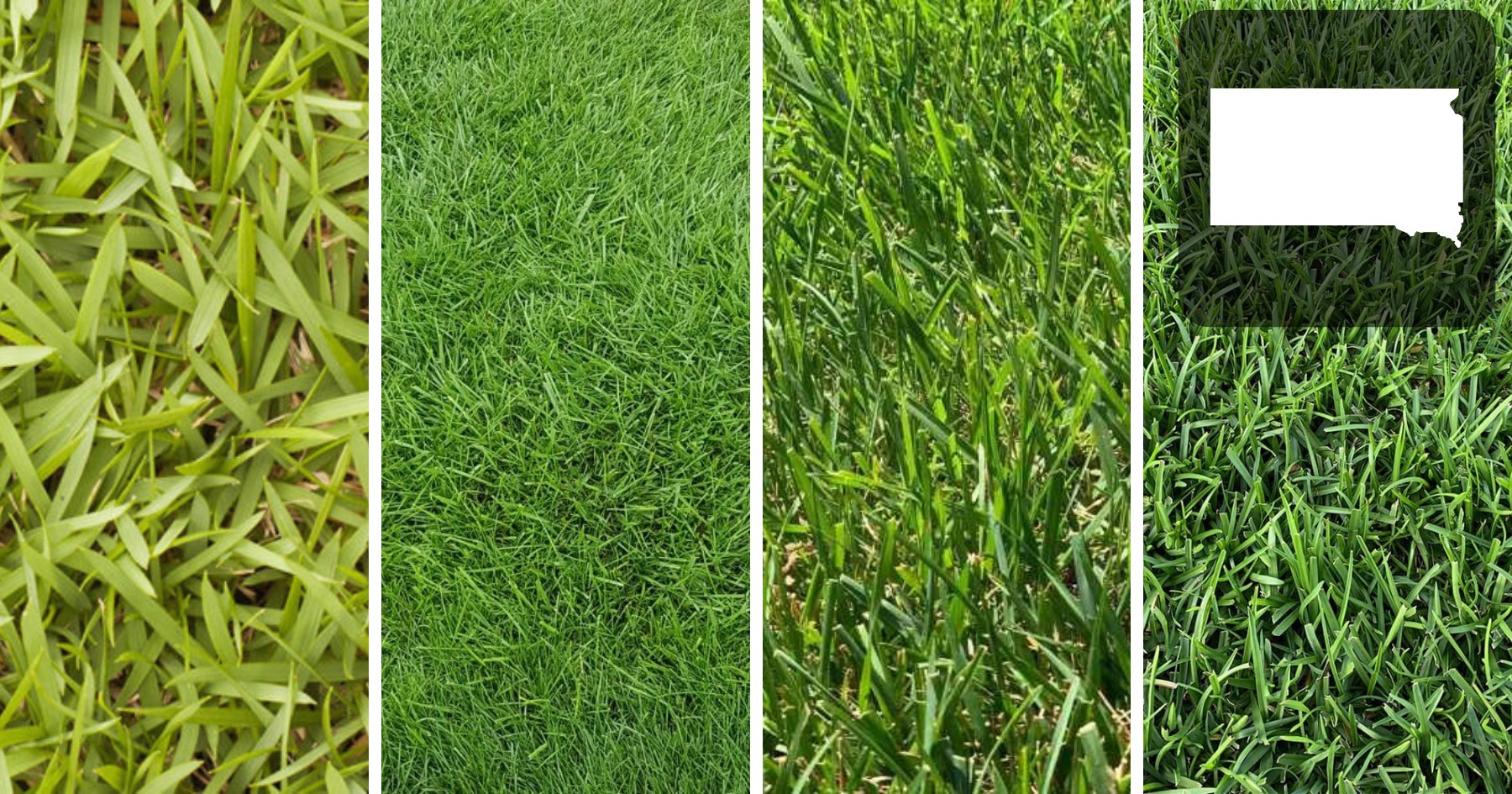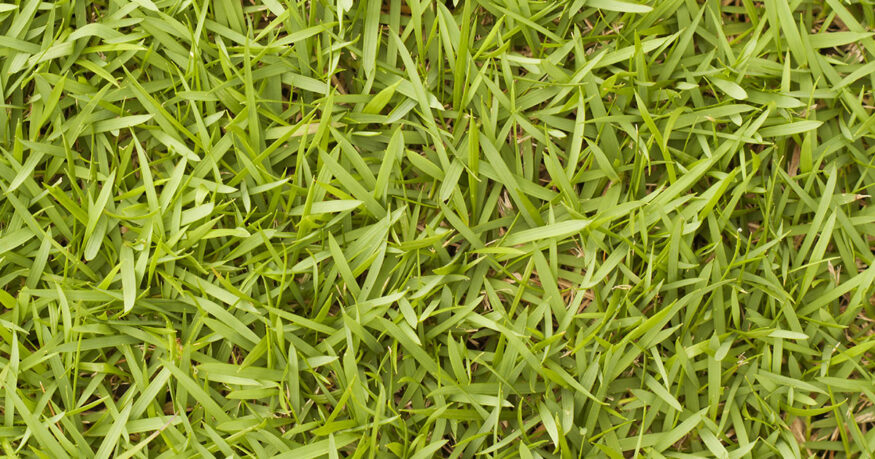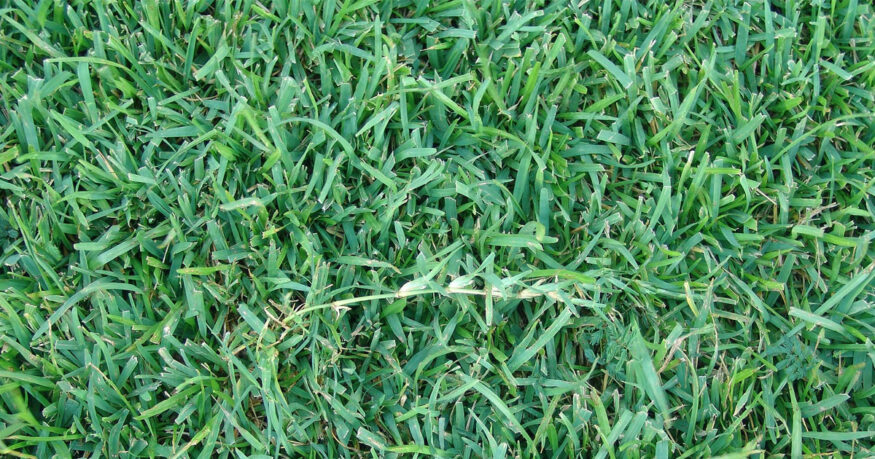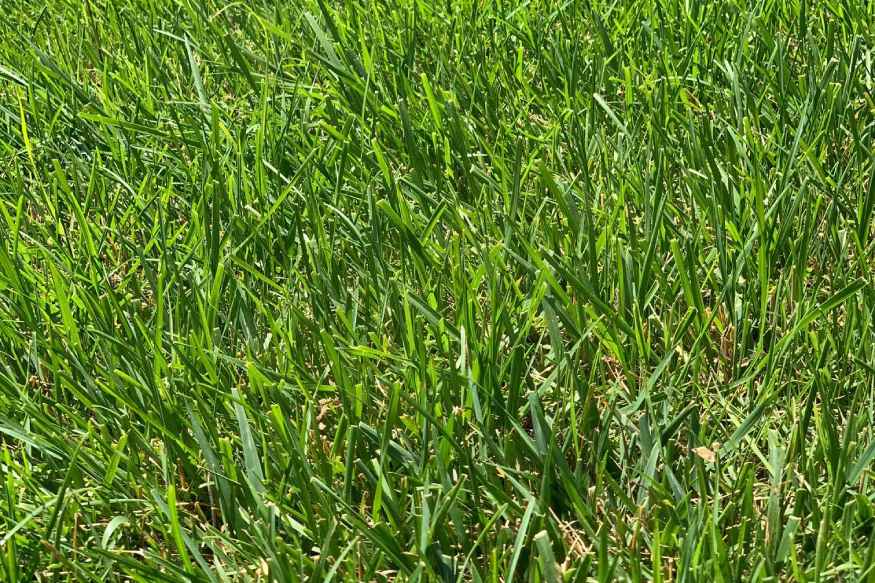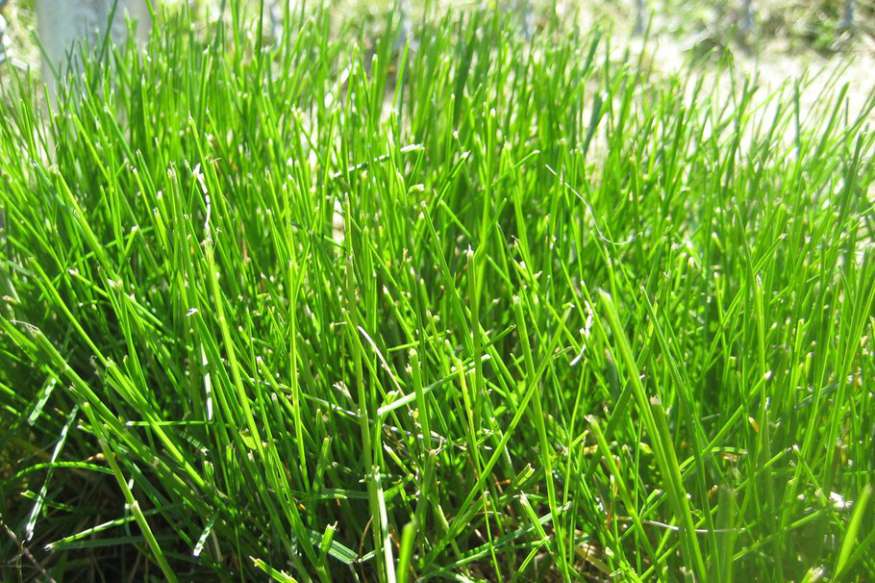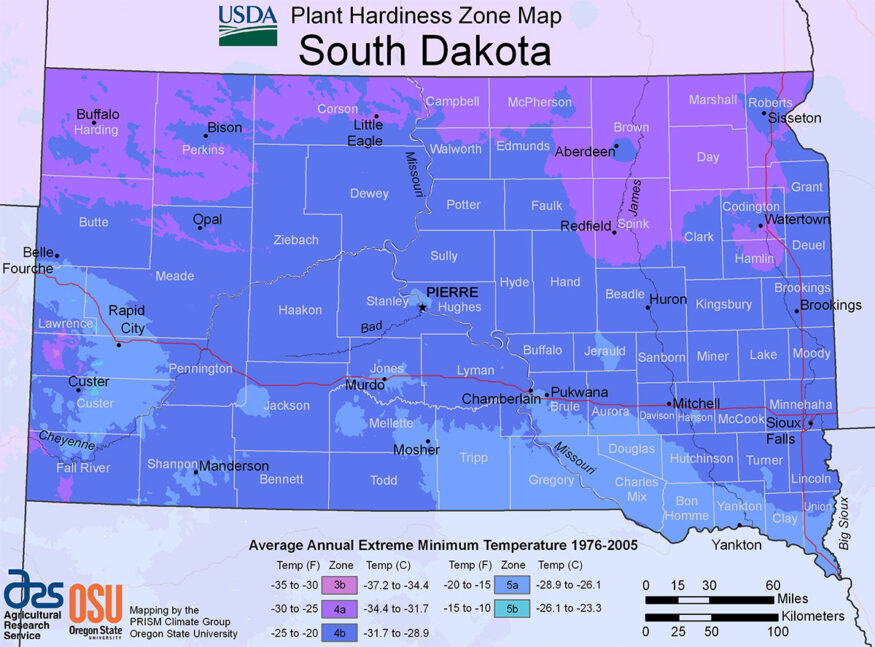As a South Dakota homeowner, you know all too well the rewarding yet formidable task of maintaining a beautiful, verdant lawn amid our region’s challenging conditions. Between harsh weather, occasional dry spells, and the common wear and tear of foot traffic, keeping your lawn healthy can seem like an uphill battle.
Fear not, however, as the solution may be simpler than you think: choosing the optimal grass seed. While Bermuda grass often steals the spotlight, your lawn’s unique needs might call for a different hero.
Delve deeper with us as we unearth the finest grass seeds for South Dakota, empowering you to keep your lawn thriving and visually captivating, regardless of the season.
[ez-toc]
Bermuda Grass
| Also Known As | Bermuda grass, wiregrass; Cynodon dactylon L. |
| Type of Grass | Warm season perennial |
| Optimal Zones | Southern region |
| Root Structure | Deep |
| Winter hardiness | Poor |
| Heat tolerance | Excellent |
| Shade tolerance | Poor |
| Water Requirements | High |
| Drought Tolerance | High |
| Self Repair Capacity | Excellent |
| Overall Maintenance Requirements | Moderate to High |
Why Bermuda Grass is The Most Popular Choice For South Dakota
This warm-season grass is a great choice for the hot and dry summers of South Dakota, as it is tolerant of these conditions and can quickly recover from wear and tear. Not to mention, Bermuda grass is resistant to diseases and pests, making it a low-maintenance option for homeowners.
Bermuda grass is not only practical but also aesthetically pleasing. It boasts a fine to medium texture and a dark green color that can create a dense and attractive lawn. Plus, it can be mixed with other grasses like perennial ryegrass or Kentucky bluegrass for improved performance.
While Bermuda grass is a great option for South Dakota, it does require certain conditions to thrive. It needs full sun exposure and well-drained soil with a pH of 5.8 to 7.0. Heavy clay or poor drainage areas are not recommended for Bermuda grass. It’s also important to note that this grass doesn’t do well in shady areas.
Maintaining a Bermuda grass lawn requires regular mowing to keep it at a height of 1 to 2 inches. It also needs frequent watering during the growing season, especially in the first year of establishment. To encourage deep root growth, it’s important to water deeply and infrequently.
Bermuda grass also needs moderate to high fertilization, depending on soil quality and desired lawn quality. It should be fertilized with a balanced fertilizer every 4 to 6 weeks during the growing season and aerated and dethatched annually to prevent soil compaction and thatch buildup.
One thing to note is that Bermuda grass goes dormant in the winter and turns brown when the temperature drops below 50°F. However, this can be mitigated by overseeding with a cool-season grass like perennial ryegrass or fine fescue to maintain a green lawn throughout the year.
Bermuda grass is a great option for homeowners in South Dakota looking for a low-maintenance, visually appealing lawn. With proper care, Bermuda grass can thrive in the hot and dry summers of South Dakota and provide a lush, green lawn for years to come.
Looking for the best grass seed for your region?
Our smart lawn plans are designed to work perfectly with your local soil and climate conditions, without any of the toxic stuff.
Use the code EHG20 for an instant $20 discount!
- Personalized lawn care: Custom lawn plans based on soil analysis, climate data, and your specific lawn needs.
- Convenience with a conscience: Products that are not only easy to use but also safe for you, your pets, and the planet.
- Science-backed formulas: Bio-based formulas contain effective, natural ingredients like seaweed, molasses, and iron.
- Expert support: Get one-on-one guidance from a real person and rest easy with Sunday's satisfaction guarantee.
Centipede Grass
| Also Known As | Lazy man’s grass; Eremochloa ophiuroides |
| Type of Grass | Warm season perennial |
| Optimal Zones | 7 – 10, South Eastern US; Hawaii |
| Root Structure | Shallow |
| Winter hardiness | Very poor |
| Heat tolerance | Excellent |
| Shade tolerance | Fair |
| Water Requirements | Moderate to High |
| Drought Tolerance | Moderate to High |
| Self Repair Capacity | Poor |
| Overall Maintenance Requirements | Low |
What Makes Centipede Grass A Great Choice
This warm-season grass can withstand the hot and dry summers of South Dakota while requiring minimal maintenance.
Centipede grass has a fine texture and light green color that can create a beautiful lawn. It can also grow well in acidic and sandy soils which are common in South Dakota. Additionally, this grass can tolerate moderate shade and foot traffic, making it an excellent choice for a variety of lawn needs.
However, there are some downsides to consider before planting Centipede grass. This grass is not very cold tolerant and may go dormant or die in the harsh winters of South Dakota. It is also susceptible to some diseases and pests, such as brown patch, dollar spot, nematodes, and mole crickets. Additionally, Centipede grass does not spread quickly and may take longer to establish than other grasses.
If you decide to plant Centipede grass, there are some basic care instructions to follow. You should plant the seeds in late spring or early summer when the soil temperature is above 70°F. Water the seeds regularly until they germinate and then water the lawn once or twice a week depending on the weather conditions.
Fertilize the lawn once a year in late spring or early summer with a low-nitrogen fertilizer. Mow the lawn at a height of 1.5 to 2 inches and avoid scalping or cutting too short. Lastly, control weeds, diseases, and pests with appropriate herbicides, fungicides, and insecticides as needed.
Centipede grass is an excellent choice for homeowners in South Dakota who are looking for a low-maintenance grass that can withstand hot summers and grow well in acidic soils. Just be aware of its limitations in cold weather and susceptibility to certain diseases and pests. With proper care, Centipede grass can provide a beautiful and lush lawn for years to come.
Turf Type Fescue
| Also Known As | Fine fescue, creeping red |
| Type of Grass | Cool-season grass |
| Optimal Zones | Northern and transition zones |
| Root Structure | Deep-rooted |
| Winter Hardiness | Excellent |
| Heat Tolerance | Poor to fair |
| Shade Tolerance | Excellent |
| Water Requirements | Moderate |
| Drought Tolerance | Good |
| Self Repair Capacity | Good |
| Overall Maintenance Requirements | Moderate to high |
Why Turf Type Fescue Grows well in South Dakota
This cool-season grass can tolerate both the cold winters and hot summers that South Dakota is known for, making it an excellent choice for a low-maintenance lawn.
One of the key benefits of Turf-Type Fescue is its deep root system, which makes it drought-resistant and able to access nutrients from the soil. This means you won’t have to worry about watering your lawn as frequently as you would with other grass types. Additionally, Turf-Type Fescue has a fine to medium leaf texture that gives it a soft and dense appearance, making it an attractive addition to any yard.
Another advantage of Turf-Type Fescue is its adaptability to different lawn conditions. It can grow well in full sun to moderate shade, making it a versatile option for homeowners with varying levels of sunlight in their yards. And with low to moderate maintenance needs, Turf-Type Fescue requires less mowing and fertilizing than other grass types, saving you time and money in the long run.
When it comes to caring for Turf-Type Fescue, it’s important to sow the seeds in early spring or fall when the soil temperature is between 50°F and 65°F. Use a seed rate of 5 to 7 pounds per 1000 square feet for new lawns and 3 to 4 pounds per 1000 square feet for overseeding existing lawns.
Water the seeds lightly and frequently until they germinate, then reduce the frequency and increase the depth of watering to encourage root growth. Mow the grass at a height of 3 to 4 inches and leave the clippings on the lawn to return nutrients to the soil. Fertilize the lawn with a balanced fertilizer in spring and fall, applying 1 pound of nitrogen per 1000 square feet per application. And don’t forget to aerate the lawn once a year in fall to relieve soil compaction and improve water and air penetration.
While Turf-Type Fescue is a great choice for homeowners in South Dakota, it’s important to note that it may need overseeding every few years to maintain its density and color, especially in areas where it is exposed to extreme heat or drought. And if you’re looking for a grass type that can handle heavy foot traffic or frequent mowing, Turf-Type Fescue may not be the best option for you.
But for those who want a low-maintenance lawn that can withstand harsh weather conditions, Turf-Type Fescue is an excellent choice.
Fine Fescue
Why Fine Fescue Is a Popular Grass seed Choice
If you’re a South Dakota homeowner looking for a grass that can withstand the state’s cold winters and other challenging environmental conditions, Fine Fescue may be the solution you’ve been searching for.
This cool-season grass is well-known for its ability to tolerate shade, drought, and low fertility, making it an excellent choice for low-maintenance lawns that don’t receive much foot traffic or irrigation.
One of the most significant advantages of Fine Fescue is its adaptability to various environmental conditions. It can grow in infertile soils, and it’s often planted on slopes where it can be left unmowed to create a meadow effect. Additionally, it’s often used in seed mixtures with other grasses to create a hardy, adaptable lawn that can withstand various environmental conditions.
While Fine Fescue has many advantages, it does have some drawbacks, such as poor wear tolerance, susceptibility to fungal diseases, and tendency to form clumps or patches in the lawn. Therefore, it is not the best choice for high-traffic areas or lawns that require frequent mowing or watering. It may also not perform well in very hot or humid conditions or in poorly drained soils.
If you’re considering planting Fine Fescue, you’ll need to know how to care for it properly. Fine Fescue has low to moderate fertilization requirements and needs about 1 to 2 pounds of nitrogen per 1000 square feet per year, depending on the soil type and quality. It should be mowed at a height of 2 to 3 inches, depending on the variety and the season. Mowing too short or too frequently can stress the grass and make it more susceptible to diseases and weeds.
Fine Fescue is an ideal grass for South Dakota homeowners looking for a low-maintenance lawn that can withstand various environmental conditions. It is best suited for shady areas where other grasses may struggle to grow and is an excellent choice for overseeding poor lawns to improve turf quality. However, it may not be the best choice for high-traffic areas or lawns that require frequent mowing or watering.
South Dakota’s Climate And Growing Challenges For Lawns
South Dakota has a continental climate with cold, dry winters and hot, humid summers. The average annual precipitation ranges from 15 to 25 inches, with most of it falling in the summer months. The state is divided by the Missouri River into two regions: West River and East River, which have different soil types and vegetation.
Related Article: The Best Grass Seed For North Dakota Lawns
West River Region Soil and Drought Challenges
The West River region has mostly clay and sandy soils that are alkaline and low in organic matter. This region is more prone to drought and erosion than the East River region, making it more challenging for lawns to thrive.
East River Region Weed and Disease Challenges
The East River region has mostly loam and silt soils that are acidic and high in organic matter. This region has more rainfall and humidity than the West River region, but also more weeds and diseases. Lawn owners need to be vigilant in controlling weeds and diseases to maintain a healthy lawn.
Best Lawn Care Practices for South Dakota
To maintain a healthy lawn in South Dakota, proper lawn care practices are essential. Water the lawn deeply but infrequently, mow at the appropriate height for the grass type, and fertilize in late summer to early fall.
Control weeds and diseases as soon as they appear, and aerate and overseed in early fall to improve soil health and turf density.
By following these practices, homeowners can overcome South Dakota’s growing challenges and have a beautiful lawn to enjoy.
Looking for the best grass seed for your region?
Our smart lawn plans are designed to work perfectly with your local soil and climate conditions, without any of the toxic stuff.
Use the code EHG20 for an instant $20 discount!
- Personalized lawn care: Custom lawn plans based on soil analysis, climate data, and your specific lawn needs.
- Convenience with a conscience: Products that are not only easy to use but also safe for you, your pets, and the planet.
- Science-backed formulas: Bio-based formulas contain effective, natural ingredients like seaweed, molasses, and iron.
- Expert support: Get one-on-one guidance from a real person and rest easy with Sunday's satisfaction guarantee.
